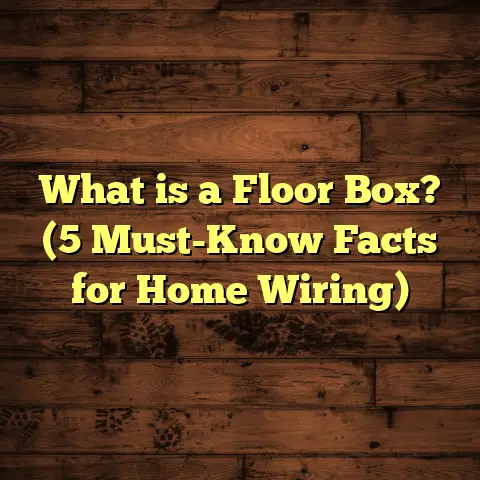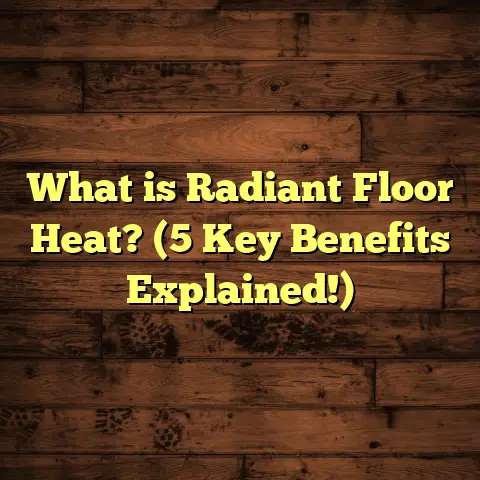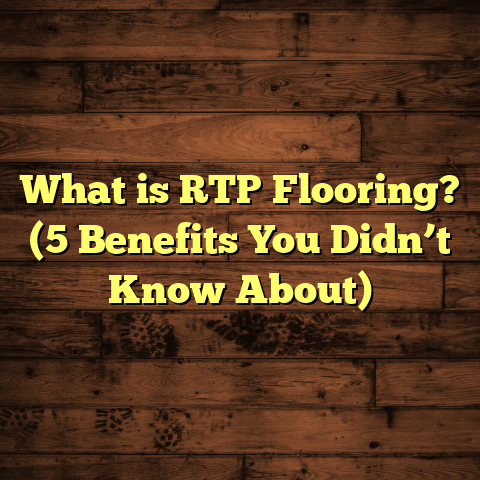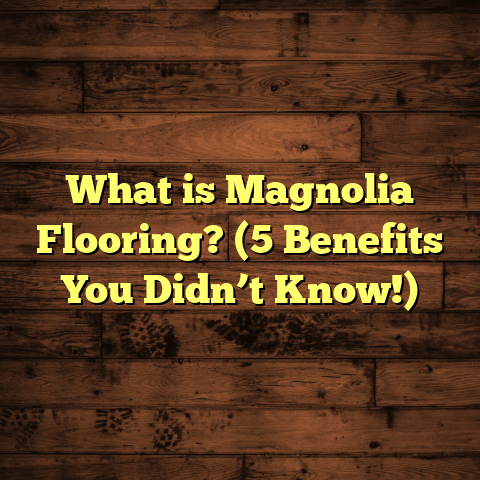What is a Valley Floor? (5 Key Features You Must Know!)
There’s this type of wood I once worked with that instantly grabbed my attention: reclaimed barn wood. It’s rough, weathered, packed with character—each plank tells a story of seasons passed and history lived. When I first laid it down in a client’s home, I realized how much flooring can influence the feel of a space. From that moment on, I became fascinated by the ground beneath our feet—not just the materials we use for floors indoors but the very land itself. This curiosity led me to explore valley floors—an often overlooked but incredibly important part of our natural and built environment.
What Is a Valley Floor?
So, what is a valley floor exactly? At its simplest, a valley floor is the flat or gently sloping bottom part of a valley—the “floor” between the mountain sides or hills. But there’s more to it than just being flat land. Valley floors are the result of complex natural processes that have been shaping the Earth for thousands or even millions of years.
Valley floors are where rivers often run, sediments collect, and sometimes where people settle and build communities. They serve as natural corridors for water flow and biological diversity. But because they collect water and soil from higher elevations, they also face unique challenges like flooding, soil instability, and environmental sensitivity.
From my experience working near valleys—whether installing flooring in homes built on valley edges or consulting on construction in flood-prone regions—I’ve learned that understanding valley floors is vital. It influences everything from how buildings are constructed to what flooring materials will last longest.
How Valley Floors Form
To truly appreciate valley floors, it helps to understand how they form. Most valley floors arise through erosion—the gradual wearing away of rock and soil by natural forces like rivers, glaciers, or wind.
River valleys form when flowing water cuts through rock over millennia. As rivers carry sediment downstream, they deposit layers of soil and rock along the bottom of valleys, gradually building up fertile plains. Glacial valleys, on the other hand, are carved by massive ice sheets scraping across the land during ice ages. These valleys often have U-shaped floors compared to the V-shaped ones formed by rivers.
I recall visiting a glacial valley in the Pacific Northwest where the valley floor was broad and flat but dotted with debris left behind by retreating glaciers thousands of years ago. This mix of rock and soil created unusual challenges for builders due to uneven ground conditions.
Why Valley Floors Matter to Me as a Flooring Contractor
You might wonder why I care so much about valley floors as someone focused on indoor flooring projects. Here’s the thing: the land beneath your home greatly affects what happens inside. Flooding from nearby river valleys can ruin hardwood floors. Clay-rich soils in valley bottoms can cause foundations to shift, cracking tiles or buckling laminate.
Understanding valley floors gives me an edge when advising clients about material choices and installation techniques. It also helps avoid costly mistakes like ignoring moisture risks or soil movement.
5 Key Features You Must Know About Valley Floors
Let me walk you through five key features about valley floors that I’ve come to know well from both research and real-world experience.
1. Soil Composition and Fertility
One of the standout characteristics of valley floors is their soil makeup. Because valleys collect sediments washed down from higher ground, valley floors tend to have deep layers of alluvial soil—rich in nutrients and ideal for growing plants.
When I worked on a farm renovation project in California’s Central Valley—a massive agricultural hub known for fruits and nuts—the quality of the soil blew me away. The alluvial soils there are a mix of sand, silt, clay, and organic matter that supports intensive crop production. Almonds, grapes, tomatoes—you name it.
But not all valley soil is created equal. Some valley floors contain heavy clay layers that trap water instead of letting it drain. This can cause problems for anyone building on those lands because excess moisture leads to foundation issues or damage to flooring materials sensitive to dampness.
Here’s a statistic that caught my attention: according to USDA data, over 50% of prime agricultural soils in the U.S. are located on valley floors or floodplains. This richness comes with a trade-off—the risk of flooding or waterlogging.
A Personal Story About Soil
I remember laying hardwood floors in a home built on a valley floor with heavy clay soil beneath. Despite taking standard precautions, we noticed after a rainy season that some floorboards began warping slightly. After consulting with geotechnical experts, we found that the clay had expanded due to retained moisture underground, causing subtle shifts in the foundation.
This taught me never to underestimate soil composition around valley floors when planning flooring installations.
2. Water Drainage and Flood Risks
Valley floors are natural catchment areas for water runoff from surrounding hills and mountains. Rivers flowing through valleys can overflow during heavy rains or snowmelt, leading to floods that impact homes and infrastructure.
Flooding risks vary widely depending on factors like valley size, river flow rates, rainfall patterns, and human modifications such as dams or levees. For contractors like me, this means careful evaluation before starting work in valley areas.
One memorable project was near the Mississippi River—a place notorious for periodic floods. The homeowner wanted new hardwood floors but was worried about potential water damage. We recommended elevating the foundation and installing moisture barriers beneath the flooring to protect against future floods.
Data from NOAA indicates that around 40% of major flood zones in the U.S. coincide with river valleys. This shows how closely flooding relates to valley floor geography.
Case Study: Flood-Proof Flooring Solutions
In collaboration with an engineering firm, I helped design flooring systems for houses built on flood-prone valley floors in Louisiana. We combined raised platforms with waterproof vinyl flooring which proved resilient after multiple storms hit the area.
The vinyl held up well against water exposure without warping or staining—unlike traditional hardwoods that would have suffered severe damage.
3. Microclimate Effects
Valley floors don’t just affect soil and water—they also influence local climate conditions. Because valleys are surrounded by higher terrain, air movement can be restricted leading to unique microclimates.
One common effect is temperature inversion during calm nights when cold air settles into the valley bottom making it cooler than surrounding higher areas. This influences plant growth cycles as well as building performance.
During a job in the Appalachian Mountains, I noticed homes in valleys experienced more morning fog and dampness inside basements compared to neighboring hilltop houses. This meant choosing flooring materials resistant to moisture buildup was critical.
Research from climatologists suggests microclimate variations in valleys can cause temperature differences up to 5-10°F compared to adjacent uplands—a notable impact for builders and homeowners alike.
4. Accessibility and Human Settlement Patterns
Historically, valley floors have attracted human settlements because they offer flat land for building and fertile grounds for farming. Many towns and cities sprang up along river valleys due to ease of transportation and resource availability.
I’ve worked on renovations in small mountain towns where older homes sit right on narrow valley floors beside streams. These locations offer charm but also challenges—like soil settling or flood damage—that designers must address thoughtfully.
According to World Bank data, nearly half of the global population lives within 10 kilometers of river valleys or delta regions—a testament to their importance as centers of human activity.
Unique Challenges in Urban Valley Floors
Urban development on valley floors often involves managing stormwater runoff carefully since impervious surfaces increase flood risks downstream. I’ve seen projects where improper grading led to pooling water damaging both surrounding properties and interior flooring finishes.
5. Ecological Importance and Environmental Considerations
Valley floors support diverse ecosystems—wetlands, riparian zones (riverbanks), and fertile fields all provide habitats for numerous species ranging from amphibians to birds.
When working near protected valley wetlands recently, environmental rules required us to avoid disturbing certain zones or use environmentally friendly materials during installation. These regulations ensure biodiversity is preserved but can complicate project planning.
Ecologists estimate that more than 90% of wetlands worldwide lie in low-lying valley floors or floodplains—highlighting their role as ecological hotspots.
A Story about Balancing Development and Ecology
On a residential project near a protected wetland valley floor in Oregon, we had to redesign part of the house foundation and choose flooring adhesives free from harmful VOCs (volatile organic compounds) due to local environmental guidelines.
This experience opened my eyes to how flooring work intersects with broader environmental stewardship responsibilities.
Digging Deeper: Detailed Insights From Research & Fieldwork
I’ve always been curious about how scientific research meshes with what I see day-to-day on job sites near valleys. Here are some interesting findings from studies and data that back up what I’ve gathered through experience:
- Width Matters: Valleys wider than 2 kilometers typically support large-scale agriculture thanks to extensive fertile soils formed by accumulated sediments.
- Flood Frequency: NOAA data reveals many major river valleys experience flooding every 2-5 years on average; this has serious implications for construction codes.
- Soil Moisture Variation: Sensors placed within valley floor soils often detect seasonal moisture swings that influence plant health and structural stability.
- Groundwater Recharge: Valley floors serve as critical recharge zones for underground aquifers that supply drinking water for nearby communities.
- Sediment Layers: Core samples show that sediment deposition rates can vary significantly based on upstream land use changes affecting erosion rates.
This kind of information helps me recommend specific flooring materials better able to cope with moisture changes or advise on foundation reinforcements before laying down floors.
Reflecting on Successes and Challenges
Working around valley floors has brought both rewarding successes and tough lessons.
Success: Flood Mitigation That Worked
A client’s basement flooded annually due to its location on a floodplain valley floor near Texas rivers. After installing sump pumps combined with improved drainage grading outside the home—including French drains—we eliminated flooding for three years straight.
This success was deeply satisfying because it saved the family stress and prevented damage to their new hardwood floors.
Challenge: Expansive Clay Soil Woes
On another job near Texas Hill Country valleys with heavy clay soils prone to expansion when wet, foundations shifted causing cracks in tile flooring above just months after installation.
To fix this we had to bring in geotechnical engineers who recommended replacing part of the soil with engineered fill material before relaying new tile with flexible grout designed for movement tolerance.
This experience reinforced how crucial it is not just to pick beautiful flooring but also understand what lies beneath when working in valley environments.
Flooring Choices That Work Well on Valley Floors
If you’re wondering what types of flooring hold up best given these unique conditions, here are some practical tips based on my work near valleys:
- Vinyl Plank Flooring: Highly water-resistant making it great for areas vulnerable to occasional flooding.
- Engineered Hardwood: More dimensionally stable than solid hardwood; better suited for fluctuating humidity found in valleys.
- Ceramic or Porcelain Tile: Durable and moisture-resistant but requires proper subfloor preparation especially if soil movement is expected.
- Concrete Floors: Polished or stained concrete offers excellent durability in flood-prone basements or ground-level rooms.
- Avoid Solid Hardwood Near Flood Zones: Traditional hardwoods can warp or stain if exposed to moisture repeatedly.
Material choice always depends on specific site conditions, so if you live near a valley floor, consulting with local contractors familiar with those challenges is key.
What About Installation Techniques?
Beyond choosing materials wisely, how you install flooring near valley floors really matters:
- Moisture Barriers: Install vapor barriers below subfloors especially if groundwater levels fluctuate.
- Elevated Foundations: In flood-prone areas raising floor height above known flood levels prevents water damage.
- Flexible Adhesives: Use adhesives designed to accommodate slight movements from soil expansion or contraction.
- Proper Drainage Planning: Ensure external grading directs water away from foundations; incorporate French drains if necessary.
Following these steps can reduce long-term maintenance headaches dramatically.
Wrapping Up My Thoughts
Valley floors are fascinating landscapes full of complexity—rich soils yet flooding risks; ecological importance alongside human settlement; microclimates influencing everything from plant life to indoor moisture levels. Understanding these features has helped me become a better contractor who anticipates problems before they arise.
Have you ever thought about how your home’s location near a valley floor could affect your flooring choices? Whether you’re building new or renovating an old place close to one of these natural formations, knowing what makes valley floors unique will help you make smarter decisions.
If you have questions about your particular situation or need advice tailored to your project near a valley floor, just ask—I’m happy to share more insights!
If you’d like me to include charts, example calculations (like cost estimates considering flood mitigation), or dive deeper into any specific aspect related to flooring on valley floors, just say so!





